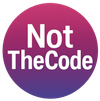Your First AI Mentor: Not a code vending machine
Stop treating AI like a code vending machine. This playbook helps you use tools like GitHub Copilot and ChatGPT. These tools act as personal mentors. They help you learn faster, work with confidence, and build important habits.

Key Takeaways
- Treat AI as a mentor, not a vending machine. The goal isn’t to get code faster; it’s to learn better. Shift your mindset from asking "what's the code?" to "why is this the right code?"
- Use the Mentor Loop for every task. Adopt a simple habit: set a tiny goal, prompt for a plan and a small
diff, verify it locally, and reflect on the tradeoffs. This turns every task into a deliberate practice session. - Focus on habits, not just features. Use AI to practice skills that senior developers need. These skills include reading new code, following Test-Driven Development (TDD), and giving helpful code reviews.
- You are always in the driver's seat. AI suggests, but you decide. Your judgment, your tests, and your understanding are what make the code work. Never ship code you don't understand.
You’re staring at a failing test. The senior who usually helps is in a meeting. The codebase feels like a maze, and self-doubt begins to grow. We’ve all been there.
As a last resort, you paste the error into an AI assistant. It doesn't just spit out an answer. It explains the why, proposes a tiny, safe change, and even suggests a test to prove the fix.
That’s the moment AI stops feeling like a magic shortcut and starts feeling like a mentor.
This isn't another guide to "10x productivity." It's a guide for using tools like GitHub Copilot, Claude Code, and ChatGPT as helpful partners. These tools can help you learn faster, work with more confidence, and build important habits for the long run.
It All Starts with a Simple Habit
The biggest mistake people make with AI is treating it like a vending machine for code. The real power comes when you treat it like a thinking partner.
The Mentor Loop is an easy way to do this. First, set a small goal. Next, ask for a plan and a small change (a diff). Then, check it yourself. Finally, and most importantly, take time to reflect on it. You ask "why?" Why was this approach better? What did I miss?
This loop turns passive code generation into active, deliberate practice.
First, Learn to See the Code
Before you can write good code, you have to read it. When you’re dropped into a new codebase, the goal isn't just to find a file; it's to build a mental map. Your AI partner can be an incredible guide.
Instead of getting lost in a dozen files, ask it to draw you a map. With Copilot Chat or Claude Code, open an important file. Then ask, "What does this module do? How does it interact with other parts of the app?"
When a function is too dense, ask for a breakdown. Using ChatGPT with a redacted snippet, try: "Explain this function like I'm new to the codebase. Give me a few questions I should be able to answer after I understand it."
An error message is a starting point, not a dead end. In your IDE, paste the stack trace and ask: "Given this error, propose the most likely root cause. Then, provide a minimal diff to fix it and a new regression test."
Next, Build and Improve with Confidence
Once you understand the landscape, it's time to build. This is where the Mentor Loop shines, turning you from a code writer into a thoughtful problem solver.
Test-Driven Development (TDD) is a perfect example. It builds a safety net that lets you move with confidence.
- Red: You write a small, failing test. This is your goalpost.
- Green: Ask Copilot or Claude: "I have a failing test. Propose the smallest code change to pass it. Return a unified diff ."
- Refactor: Now, ask: "Suggest one safe refactor to improve readability. Keep the tests green and return a diff."
Good code isn't just about what it does; it's about how clearly it communicates. Before you dive into a refactor, ask your AI to help you think: "List the implicit assumptions and edge cases in this function. Then, propose a small change to make the logic clearer and provide a diff." This forces you to slow down and be deliberate.
Finally, Ship Like a Pro
Your work isn't done when the tests pass. Shipping professional code means making it easy for others to review, understand, and build upon.
A good pull request tells a story. Use your AI to help you draft it. With your diff as context, ask: "Summarize these changes for a PR. Explain the 'what' and the 'why.' List potential risks and suggest one follow-up task."
You can also use it to leave the code better than you found it. Highlight a function and ask your in-IDE assistant: "Generate a docstring in Google style. Note the preconditions, side effects, and return values."
Keeping Your Hands on the Wheel
These tools are powerful, but they don't have your context. Your judgment is what makes the difference.
- Instead of accepting huge changes... ask for small, incremental diffs. Run your tests after each tiny step.
- Instead of using AI to avoid thinking... use it to deepen your thinking. Ask, "Explain the tradeoffs here," or "Is there a more performant way to do this?"
- Instead of vague prompts... be specific. Include file paths, function names, and expected behavior. Your clarity dictates the quality of the response.
Finding Your Rhythm with an AI Mentor
This isn't a one-size-fits-all process. The goal is to experiment and build a workflow that makes you a more confident, effective developer. Here’s a way to start.
First, Learn to See the Code: Start with Reading and Refactoring
Before you ask an AI to write new code, use it to better understand existing code. This is the safest way to start because you’re not committing any changes; you’re just learning.
Find a function in your codebase that feels a bit confusing or overly complex. Your mission is to use your AI assistant as a guide to see what better looks like.
- Understand: Ask your AI to explain the function’s purpose, its inputs, and its side effects.
- Explore: Prompt it for a single, safe refactor. "Suggest one change to improve this function's readability without changing its behavior. Provide the change as a unified diff."
- Study: Don't apply the change. Instead, study the
diff. Does it make the logic clearer? Does it remove a potential bug? This is your lesson. You’re not just learning code; you’re learning to recognize the patterns of clean, maintainable code.
Repeat this process on different parts of the codebase. It’s a low-pressure way to build the critical skill of reading code with an eye for improvement.
Next, Build Momentum: Move to Shipping Small, Confident Changes
Once you’re comfortable analyzing code with your AI partner, apply that learning to a real task. Pick something small and manageable—a simple bug fix or a tiny feature.
Use the Test-Driven Development workflow as your guide, with your AI assistant as a partner every step of the way.
- You write the failing test. This anchors the work and defines success.
- You ask for the minimal code to make the test pass.
- You prompt for a refactor to make the code clean.
- You ask the AI to draft the PR summary, which you then edit into your own words.
This isn't about the AI writing code for you; it's about you driving a professional workflow from start to finish. You own the tests, you own the code, and you own the story of the change. Each small win builds the confidence you need to take on more complex problems.
Experiment with these stages. Find the prompts that give you the clearest answers. The right workflow is the one that helps you close the gap between the code you can write and the code you want to write.
